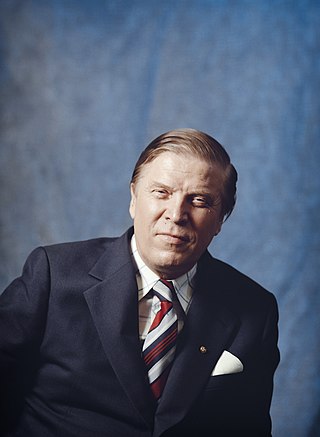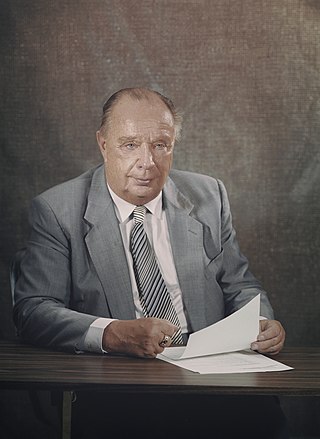| |||||||||||||||||||||||||||||||||||||||||||||||||||||||||||||||||||||||||||||||||||||||||||||||||||||||||||||||||||||
All 200 seats in the Parliament of Finland 101 seats needed for a majority | |||||||||||||||||||||||||||||||||||||||||||||||||||||||||||||||||||||||||||||||||||||||||||||||||||||||||||||||||||||
|---|---|---|---|---|---|---|---|---|---|---|---|---|---|---|---|---|---|---|---|---|---|---|---|---|---|---|---|---|---|---|---|---|---|---|---|---|---|---|---|---|---|---|---|---|---|---|---|---|---|---|---|---|---|---|---|---|---|---|---|---|---|---|---|---|---|---|---|---|---|---|---|---|---|---|---|---|---|---|---|---|---|---|---|---|---|---|---|---|---|---|---|---|---|---|---|---|---|---|---|---|---|---|---|---|---|---|---|---|---|---|---|---|---|---|---|---|---|
| |||||||||||||||||||||||||||||||||||||||||||||||||||||||||||||||||||||||||||||||||||||||||||||||||||||||||||||||||||||
| |||||||||||||||||||||||||||||||||||||||||||||||||||||||||||||||||||||||||||||||||||||||||||||||||||||||||||||||||||||
 |
|---|
Parliamentary elections were held in Finland on 15 and 16 March 1970. [1]
| |||||||||||||||||||||||||||||||||||||||||||||||||||||||||||||||||||||||||||||||||||||||||||||||||||||||||||||||||||||
All 200 seats in the Parliament of Finland 101 seats needed for a majority | |||||||||||||||||||||||||||||||||||||||||||||||||||||||||||||||||||||||||||||||||||||||||||||||||||||||||||||||||||||
|---|---|---|---|---|---|---|---|---|---|---|---|---|---|---|---|---|---|---|---|---|---|---|---|---|---|---|---|---|---|---|---|---|---|---|---|---|---|---|---|---|---|---|---|---|---|---|---|---|---|---|---|---|---|---|---|---|---|---|---|---|---|---|---|---|---|---|---|---|---|---|---|---|---|---|---|---|---|---|---|---|---|---|---|---|---|---|---|---|---|---|---|---|---|---|---|---|---|---|---|---|---|---|---|---|---|---|---|---|---|---|---|---|---|---|---|---|---|
| |||||||||||||||||||||||||||||||||||||||||||||||||||||||||||||||||||||||||||||||||||||||||||||||||||||||||||||||||||||
| |||||||||||||||||||||||||||||||||||||||||||||||||||||||||||||||||||||||||||||||||||||||||||||||||||||||||||||||||||||
 |
|---|
Parliamentary elections were held in Finland on 15 and 16 March 1970. [1]
Mauno Koivisto had replaced Rafael Paasio as leader of the Social Democratic Party and Prime Minister in March 1968. His government was very broad-based, including the Social Democrats, the Centre Party, the Finnish People's Democratic League, the Swedish People's Party and the Social Democratic Union of Workers and Smallholders, with over four-fifths of MPs belonging to the governing parties. Koivisto's government implemented some liberal reforms, including the sale of medium-strength beer in grocery stores and kiosks, and elective abortion (allowed also for social reasons, in addition to medical ones). The government helped the Finnish economy to grow by pursuing its predecessor's policies of subsidising export companies and fixed-term public works or government-funded jobs.
Centralized incomes agreements between the employers' organizations, labour unions and government became a part of the Finnish "consensus" (broad agreement) politics. On the other hand, quickly proceeding urbanization and industrialization caused many young people and young adults to leave from the countryside, and tens of thousands of Finns moved to Sweden in pursuit of a higher standard of living. Smallholders were severely affected, particularly in eastern and northern Finland. The populist Finnish Rural Party benefited from this discontent, and its charismatic leader, former Assistant Finance Minister and presidential candidate Veikko Vennamo accused the "old parties" of deliberately worsening the farmers' living standards, emptying the countryside and appeasing the Soviet Union too much by, for example, discouraging its open criticism in the Finnish political debate and media.
The increasing mocking and criticism of Christianity, traditional family values, patriotism, army and military service, and parents' and teachers' authority also helped the Rural Party and the National Coalition Party to score big gains in the elections. The opposition parties were irritated by the student radicals' "conquest" of the Old University Students' House in Helsinki in November 1968. Koivisto's government suffered heavy losses, totalling over 20 MPs, but it still had a majority. President Urho Kekkonen allowed the National Coalition Party's leader Juha Rihtniemi to try to form a new government. He was unable to form a majority government, and Kekkonen refused to allow him to form a minority centre-right government, claiming that such a government would fail in foreign policy (in other words, it would not gain the Soviet Union's trust). From May to July 1970, the Liberal city manager of Helsinki, Teuvo Aura, led a caretaker government. Long-time Foreign Minister Ahti Karjalainen managed to form a new centre-left majority government in July 1970, which excluded the National Coalition Party and Rural Party from power. One notable demographic change of these parliamentary elections was the election of several young (under 30-year-old) MPs reflecting the rising political activity of young Finns (the baby boomers), and the lowering of minimum voting age to 20 years. [2] [3] [4]
 | |||||
|---|---|---|---|---|---|
| Party | Votes | % | Seats | +/– | |
| Social Democratic Party | 594,185 | 23.43 | 52 | –3 | |
| National Coalition Party | 457,582 | 18.05 | 37 | +11 | |
| Centre Party | 434,150 | 17.12 | 36 | –13 | |
| Finnish People's Democratic League | 420,556 | 16.58 | 36 | –5 | |
| Finnish Rural Party | 265,939 | 10.49 | 18 | +17 | |
| Liberal People's Party | 150,823 | 5.95 | 8 | –1 | |
| Swedish People's Party | 135,465 | 5.34 | 11 | 0 | |
| Social Democratic Union of Workers and Smallholders | 35,453 | 1.40 | 0 | –7 | |
| Finnish Christian League | 28,547 | 1.13 | 1 | +1 | |
| Åland Coalition | 8,971 | 0.35 | 1 | 0 | |
| Entrepreneur Party | 248 | 0.01 | 0 | New | |
| Others | 3,863 | 0.15 | 0 | – | |
| Total | 2,535,782 | 100.00 | 200 | 0 | |
| Valid votes | 2,535,782 | 99.66 | |||
| Invalid/blank votes | 8,728 | 0.34 | |||
| Total votes | 2,544,510 | 100.00 | |||
| Registered voters/turnout | 3,094,359 | 82.23 | |||
| Source: Tilastokeskus 2004, [5] Suomen virallinen tilasto [6] | |||||

| Electoral district | Total seats | Seats won | ||||||||
|---|---|---|---|---|---|---|---|---|---|---|
| SDP | Kok | Kesk | SKDL | SMP | RKP | LKP | SKL | ÅS | ||
| Åland | 1 | 1 | ||||||||
| Central Finland | 11 | 3 | 2 | 3 | 2 | 1 | ||||
| Häme | 14 | 5 | 4 | 2 | 2 | 1 | ||||
| Helsinki | 22 | 6 | 7 | 4 | 3 | 2 | ||||
| Kymi | 15 | 6 | 3 | 2 | 1 | 1 | 1 | 1 | ||
| Lapland | 9 | 1 | 1 | 3 | 3 | 1 | ||||
| North Karelia | 8 | 2 | 1 | 2 | 1 | 2 | ||||
| North Savo | 11 | 2 | 2 | 3 | 2 | 2 | ||||
| Oulu | 18 | 2 | 1 | 6 | 5 | 3 | 1 | |||
| Pirkanmaa | 13 | 4 | 4 | 1 | 3 | 1 | ||||
| Satakunta | 13 | 4 | 2 | 2 | 3 | 1 | 1 | |||
| South Savo | 10 | 3 | 1 | 4 | 1 | 1 | ||||
| Uusima | 20 | 7 | 3 | 2 | 3 | 1 | 3 | 1 | ||
| Vaasa | 19 | 3 | 3 | 4 | 2 | 2 | 4 | 1 | ||
| Varsinais-Suomi | 16 | 4 | 3 | 2 | 4 | 1 | 1 | 1 | ||
| Total | 200 | 52 | 37 | 36 | 36 | 18 | 11 | 8 | 1 | 1 |
| Source: Statistics Finland [7] | ||||||||||

Urho Kaleva Kekkonen, often referred to by his initials UKK, was a Finnish politician who served as the eighth and longest-serving president of Finland from 1956 to 1982. He also served as prime minister, and held various other cabinet positions. He was the third and most recent president from the Agrarian League/Centre Party. Head of state for nearly 26 years, he dominated Finnish politics for 31 years overall. Holding a large amount of power, he won his later elections with little opposition and has often been classified as an autocrat. Nevertheless, he remains a respected figure.

Väinö Alfred Tanner was a leading figure in the Social Democratic Party of Finland, and a pioneer and leader of the cooperative movement in Finland. He was Prime Minister of Finland in 1926–1927.

The Centre Party, officially the Centre Party of Finland, is an agrarian political party in Finland.

Johannes Virolainen was a Finnish politician and who served as 30th Prime Minister of Finland, helped inhabitants of Karelia and created Mandatory Swedish in Finnish basic schools.

Veikko Emil Aleksander Vennamo was a Finnish politician. In 1959, he founded the Finnish Rural Party, which was succeeded by the True Finns in 1995. He had originally been the leader of a faction of the Agrarian League. When his opponent, Urho Kekkonen, was elected president of Finland, Vennamo broke off his Agrarian League affiliation. Vennamo was a member of Parliament in 1945–1962 and 1966–1987. He was also the director of the Agricultural ministry's Resettlement office in 1944–1959 and was responsible for the resettlement of the farmers evacuated from the ceded Karelia. Later he was a department director at the Board of Customs.

Parliamentary elections were held in Finland on 17 and 18 March 1945. The broad-based centre-left government of Prime Minister Juho Kusti Paasikivi remained in office after the elections.
Parliamentary elections were held in Finland on 6 and 7 July 1958. The communist Finnish People's Democratic League emerged as the largest party, but was unable to form a government.
Parliamentary elections were held in Finland on 1 and 2 April 1924. Although the Social Democratic Party remained the largest in Parliament with 60 of the 200 seats, Lauri Ingman of the National Coalition Party formed a centre-right majority government in May 1924. It remained intact until the Agrarians left in November 1924. Voter turnout was 57.4%.
Parliamentary elections were held in Finland on 1 and 2 October 1930. The Social Democratic Party emerged as the largest in Parliament with 66 of the 200 seats. Voter turnout was 65.9%.
Parliamentary elections were held in Finland on 1 and 2 July 1936. Following the election Prime Minister Toivo Mikael Kivimäki of the National Progressive Party was defeated in a confidence vote in September 1936 and resigned in October. Kyösti Kallio of the Agrarian League formed a centrist minority government after Pehr Evind Svinhufvud refused to allow the Social Democrats to join the government. After Svinhufvud's defeat in the February 1937 presidential election, Kallio took office as the new President in March 1937, and he allowed the Social Democrats, Agrarians and Progressives to form the first centre-left or "red soil" Finnish government. Aimo Cajander (Progressive) became Prime Minister, although the real strong men of the government were Finance Minister Väinö Tanner and Defence Minister Juho Niukkanen (Agrarian).
Parliamentary elections were held in Finland on 1 and 2 July 1948.
Parliamentary elections were held in Finland on 1 and 2 July 1951.
Parliamentary elections were held in Finland on 7 and 8 March 1954.
Parliamentary elections were held in Finland on 4 and 5 February 1962.
Parliamentary elections were held in Finland on 20 and 21 March 1966. The Social Democratic Party (SDP) overtook the Centre Party as the largest faction in Parliament. Rafael Paasio of the SDP subsequently became Prime Minister and formed a popular front government consisting of the SDP, the Centre Party, the People's Democratic League (SKDL), and the Social Democratic Union of Workers and Smallholders (TPSL) in May 1966.
Parliamentary elections were held in Finland on 2 and 3 January 1972.
Parliamentary elections were held in Finland on 21 and 22 September 1975.
Parliamentary elections were held in Finland on 18 and 19 March 1979.

Two-stage presidential elections were held in Finland in 1956. On 16 and 17 January the public elected presidential electors to an electoral college. They in turn elected the President.
Two-stage presidential elections were held in Finland in 1968. On 15 and 16 January the public elected presidential electors to an electoral college. They in turn elected the President. The result was a victory for Urho Kekkonen, who won on the first ballot. The turnout for the popular vote was 70.2.